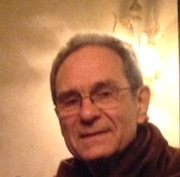Emotions are sources of energy.
There is much advice about the need to purify and cut out negative emotions. Take anger as an example. To some Buddhists, anger must be “purified.”
“Purifying ourselves of anger is essential to Buddhist practice. Furthermore, in Buddhism, there is no such thing as “righteous” or “justifiable” anger. All anger is a fetter to realisation.”
“This snare of Mara, in the form of anger, dwelling in the cave of the heart: cut it out with self-control, discernment, persistence, right view.” ~ Anguttara Nikaya
“One motivation is divided, while the other is not. The difference is vitally important because it determines whether our actions will actually relieve suffering or perpetuate it.” ~ Adyashanti, Sacred Inquiry: Questions That Can Transform Your Life
Watch out for Perfectionism
“If you wish to see the truth then hold no opinions for or against anything. When the deep meaning of things is not understood, the mind’s essential peace is disturbed to no avail.” ~Sengstan, Verses on the Faith Mind
While it is wonderful to aspire to being perfect without anger, that kind of thinking often leads to toxic positivity. Toxic positivity is the overoptimism that denies reality by vilifying the negative. It is linked to spiritual bypass—the tendency to use spiritual concepts and practices to bypass negative emotions rather than acknowledging and resolving them.
Together, toxic positivity and perfectionism sets one up for self-judgment, and to reject anger and feel that it is something to be cut out. One may think, “I am experiencing anger and that’s bad. Therefore, I am bad.”
Well, experiencing anger or any emotion is neither good nor bad. We live in the realm of form and relationships. We inhabit bodies with egos. Most of us experience negative or afflictive emotions like anger, grief, despair, as well as the positive ones like serenity and happiness.
Some of us aspire to be perfect, enlightened, and free of suffering.
We face the reality that rejecting anything, setting one thing against another, and even aspiring to be enlightened can cause suffering. Why? Because suffering is caused by aversion and attachment—wanting things to be different than the way they are. For example, wanting to not feel anger when one is feeling anger leads to the suppression of feelings and self-loathing. Yet, at the same time, our understanding that there is something toxic about anger motivates the effort to become free of it.
Emotions as Energy
Wisdom teachers in the Vajrayana, including The Dalai Lama, see anger as an emotion whose energy can be used to fuel compassionate action.
The Dalai Lama identifies three types of anger:
1. Protective anger of a mother warning her child.
2. “Moral compass” anger arising in response to social injustice and environmental exploitation.
3. Toxic, reactive anger.
This view recognises anger as something to work with rather than to reject.
Anger brings forth energy. Practically, it is more effective to purify and use that energy by transforming it into compassionate, skilful action.
Seeing the empty nature of anger dissolves it. If it does not dissolve, transforming it into compassionate action purifies it and removes it from dwelling in the “heart cave.” Faced with injustice, the energy of “moral compass” anger can fuel compassionate action. But, one must step back and disengage from hatred, even of those who may be the cause of what one is angry about. Anger’s energy fuels the discriminating mind’s ability to decide on action that will relieve suffering rather than perpetuate it.
Transformation is a skilful means to “cut it out with self-control, discernment, persistence, and right view.”
Working with Anger
Yes, anger is a poison. Though poisons like arsenic and radiation, used skilfully, can be cures.
Taking a parochial and simplistic stance regarding negative emotions leads to self-loathing, denial, and suppression. Instead, note the arising of negative emotions, accept them, and then either let them dissolve or transform their energy into skilful compassionate action.
This is, of course, easier said than done. It requires the effort to cultivate mindfulness and concentration, and the intention to not be driven by any emotion. Mindfulness and concentration are the foundations for the emotional intelligence that permits a response rather than a reaction. A skilful response seeks to alleviate the internal and external conditions that cause anger. Managing anger begins with a recognition and acceptance of the anger, and then having stepped back from it, an assessment of why it is there.
Over time and with practice, you can cut the roots of anger and fully realize your innate pure, enlightened nature. Until then, accept that you will experience anger, and do your best to use it rather than to be used by it. All the while remembering that everything is fuel and an opportunity for self-awareness.


 Share on bsky
Share on bsky





Read 1 comment and reply